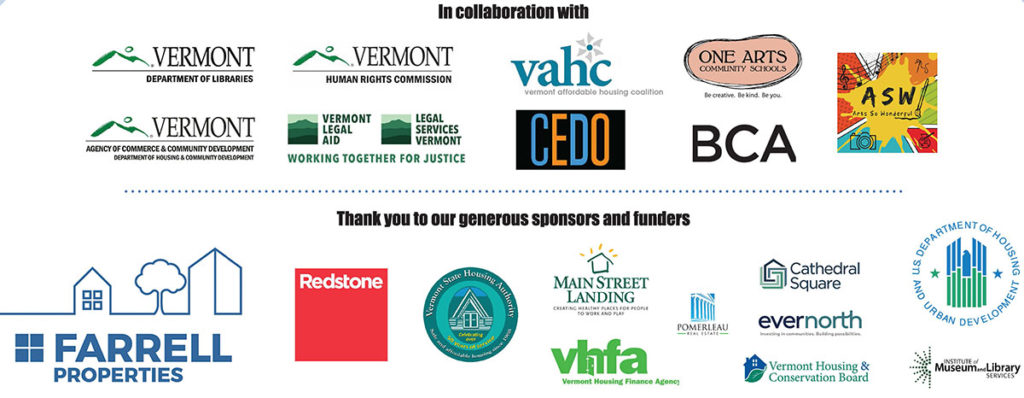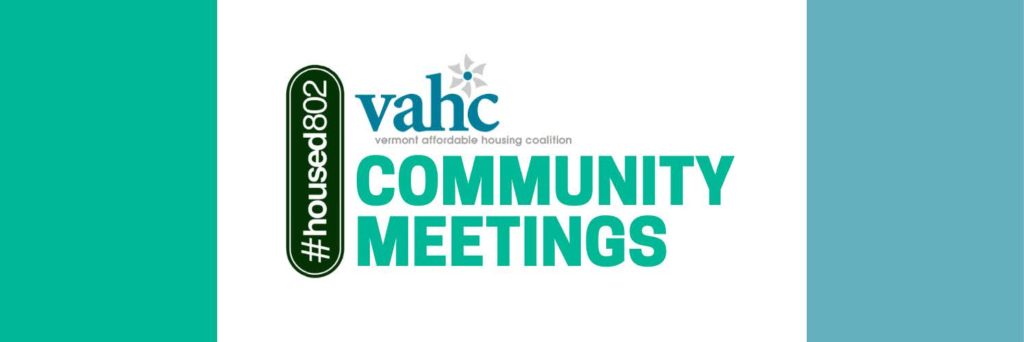Thank you for celebrating Fair Housing Month this past April with the Fair Housing Project of CVOEO and statewide partners. This year’s Fair Housing Month was full of community and creative activities all over the state. More than 1,800 people participated in virtual workshops, community conversations via Zoom, Fair Housing Friday discussions, art projects, and other events. These activities went far beyond the basics of fair housing and included discussion on ways to make our towns and cities more welcoming, issues related to housing access and homelessness, and how to address community housing needs.
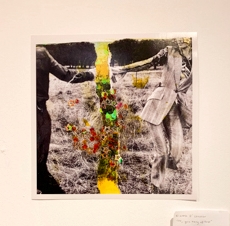
Here’s an overview of the month’s activities and links to event recordings, and more information:
- ART: A new partnership with Arts So Wonderful brought Fair Housing curriculum to its youth-lead Youth On Boards event, and invited artists to depict their visions of thriving inclusive communities through visual art, poetry, and music. You can check out their submissions here. And congratulations to Norzin Mentsang, Celeste Forcier and Brynn Barrett, the first, second and third prize winners for the art contest!
- The HeART & Home Community Art Project included home-based activities that communities and families participated in across the state.
- 26 libraries and 14 housing and community sites distributed nearly 1,000 art kits containing watercolor paints and brushes, collage cut-outs, thoughtful prompts, and fair housing resources.
- The Bent Northrop Memorial Library partnered with the Fairfield Center School and the Northwest Regional Planning Commission to distribute art kits and host an exhibit at art reception at the library. You can view some photos of the more than 50 pieces of art on display at the library here!
- In partnership with the Vermont Garden Network, we provided HeART & Home art kits to the community of South Meadow (an affordable housing site off of Pine Street in Burlington), where residents and volunteers were building a natural playscape. Families and children took breaks from the project to reflect on home and housing through art.
- CVOEO’s Fair Housing Project displayed newly designed panels featuring updated protected class iconography, ways to become an advocate, and a brief history of Fair Housing at Burlington City Hall. You can see these panels (with original art by Corrine Yonce) here.
- LIBRARY EVENTS: We again partnered with the Vermont Department of Libraries to bring Fair Housing curriculum across the state. Libraries are essential centers of our communities, providing physical and virtual spaces for information, support, and connections. In addition to accessing art kits, children and adults from all over the state took part in StoryWalks and joined Fair Housing book groups, including Story Boat by Kyo Maclear, Evicted by Matthew Desmond, and Race for Profit by Keeanga-Yamahtta Taylor.
- CVOEO also facilitated the continuation of the Vermont Department of Library housing discussion series, joined by the Vermont Affordable Housing Coalition, the Vermont Human Rights Commission, and Vermont Legal Aid to discuss housing justice, the how the state is addressing the current housing crisis, and how librarians can best connect people who are experiencing evictions to local and statewide resources and service. Watch the recording and access the resources here.
- ONGOING: See the Fair Housing resources for libraries, including a reading list, here
- WORKSHOPS: An assortment of workshops offered deep dives into discrimination and equity with opportunities for the general public, landlords, and municipal officials to learn about fair housing rights and responsibilities and discuss issues related to harassment and hate crimes.
- FAIR HOUSING FRIDAYS: These sessions are discussions among affordable housing advocates, community leaders, policymakers, and service providers about housing inclusivity. The interactive conversations provide a space to reflect on what we are doing in our community that is working to further housing equity and what policies out there might we consider to do better as housing experts, legislators, advocates, and community members. This year’s topics were Is Building More the Cure?, The Opportunities and Challenges of Mobile Home Communities, and Why Aren’t We Building the Housing We Need? Watch the recording here.
- VERMONT AFFORDABLE HOUSING COALITION EVENTS:
- VAHC April Community Meeting Community Meeting: #Housed802 meetings are an opportunity for VAHC to facilitate a discussion with community members about legislative opportunities to advocate for affordable, inclusive housing. You can find the recording here.
- In the House: In this episode of the monthly VAHC hosted conversation, VAHC Director David Martins has a conversation with Jess Hyman from CVOEO about Fair Housing Month: What is it? Where does it come from? What does it have to do with Vermonters in 2022? You can find the recording here.
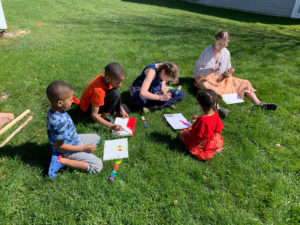
The Fair Housing Act, passed in April 1968, put into law critical protections against discrimination and harassment in housing and sought to repair and redress historical patterns of housing segregation. April was a time to celebrate these protections and highlight the positive and essential role that affordable, inclusive housing plays in our communities. However, it’s important to recognize that exclusion and discrimination still exist in Vermont and that we must continue the fight to ensure that everyone has access to safe, stable, and affordable homes, free from discrimination, exclusion, and harassment.
Where we live matters – it’s connected to how we get to work, access healthcare, where our children go to school, and our physical environment. Stable, safe, and affordable homes provide the foundation for vibrant and thriving communities and there is a strong correlation between housing opportunity and health disparities, especially for people of color and others who experience discrimination. This has been especially relevant during the pandemic and we will continue to see these inequities as pandemic-related housing supports are reduced.
What is Fair Housing?
Fair Housing is the right to equal opportunity in housing choice and the right to rent, buy, or live in a dwelling free from discrimination. The federal Fair Housing Act prohibits discrimination in housing based on race, color, religion, national origin, sex, disability, and family status. Vermont has additional protections based on age, marital status, sexual orientation, gender identity, receipt of public assistance, being a victim of domestic violence, sexual assault, or stalking, and denial of development permitting based on the income of prospective residents. For more information about fair housing in Vermont, visit www.cvoeo.org/FHP, call 802-660-3456 x 106, or email fhp@cvoeo.org.
Thank you to our Fair Housing Month Partners and Sponsors!
Fair Housing Month activities in Vermont are coordinated by the Fair Housing Project of CVOEO, in collaboration with Vermont Department of Libraries, Vermont Library Association, ONE Arts Center, Arts So Wonderful, Burlington City Arts, Vermont Legal Aid, Vermont Human Rights Commission,
Vermont Affordable Housing Coalition, Vermont Department of Housing and Community Development, CEDO, Vermont Garden Network, and other partners.
These activities are made possible with the support of the U.S. Department of Housing and Urban Development. Library activities are supported by the Institute of Museum and Library Services, a federal agency, through the Library Service and Technology Act as administered by the Vermont Department of Libraries.
We are grateful to these “Champions of Affordable, Inclusive Housing” event sponsors: Farrell Properties, Vermont State Housing Authority, Redstone, Main Street Landing, Vermont Housing Finance Agency, Evernorth, Cathedral Square, Vermont Housing & Conservation Board, and Pomerleau Real Estate.
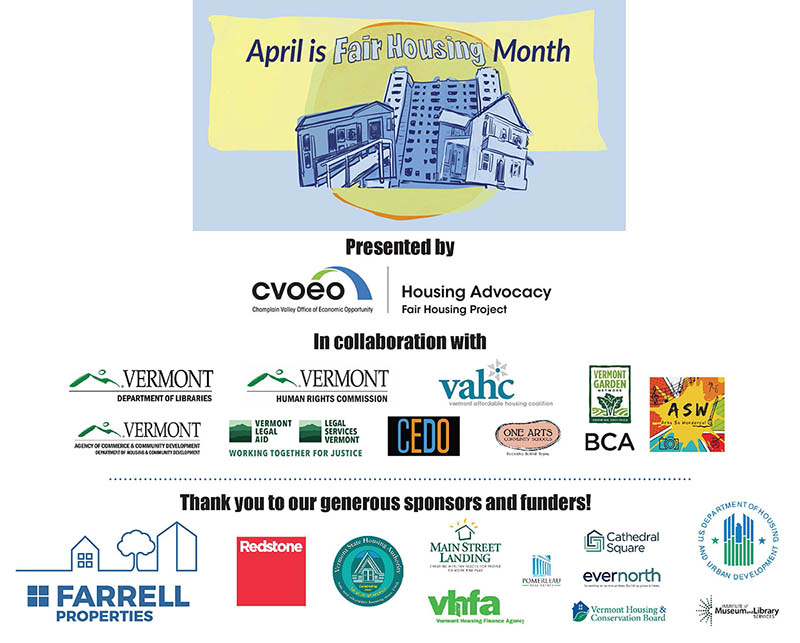
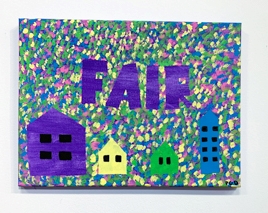
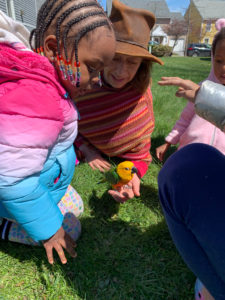

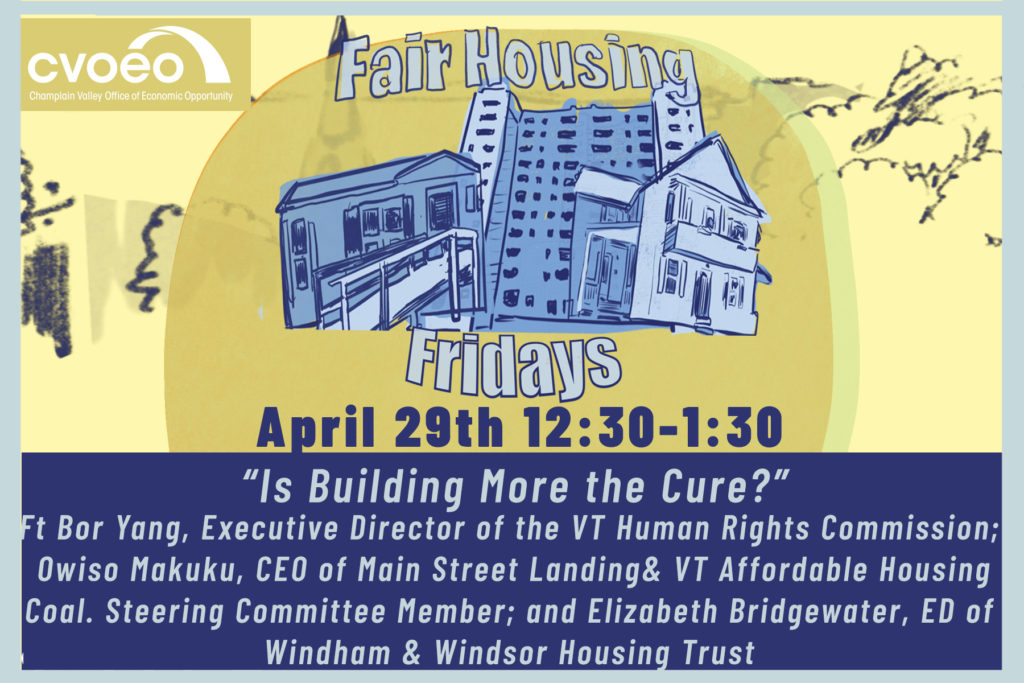
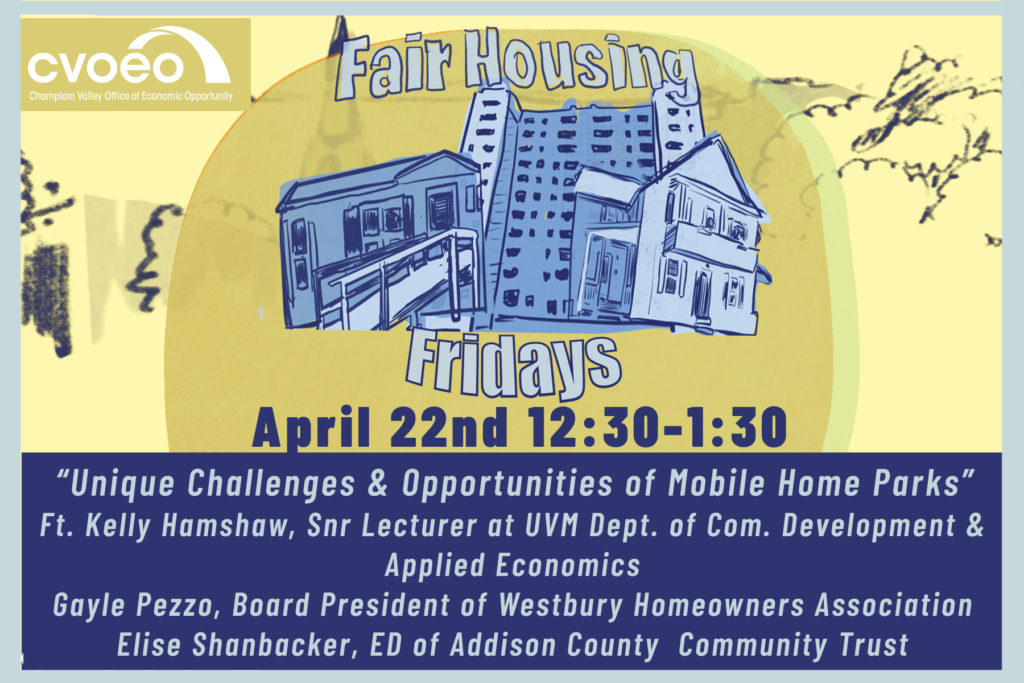
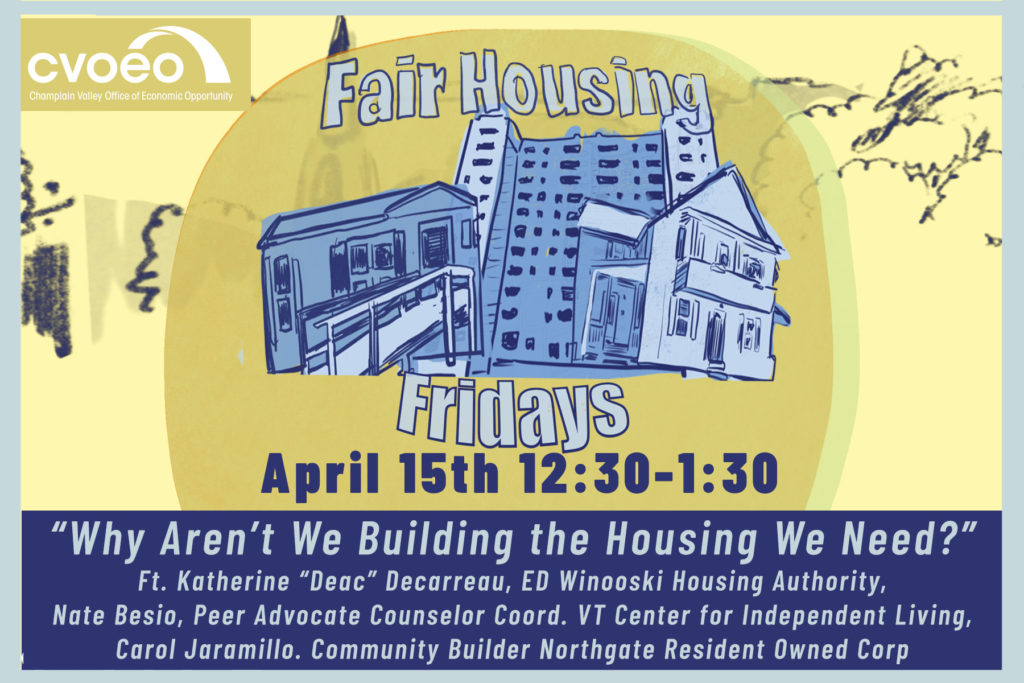
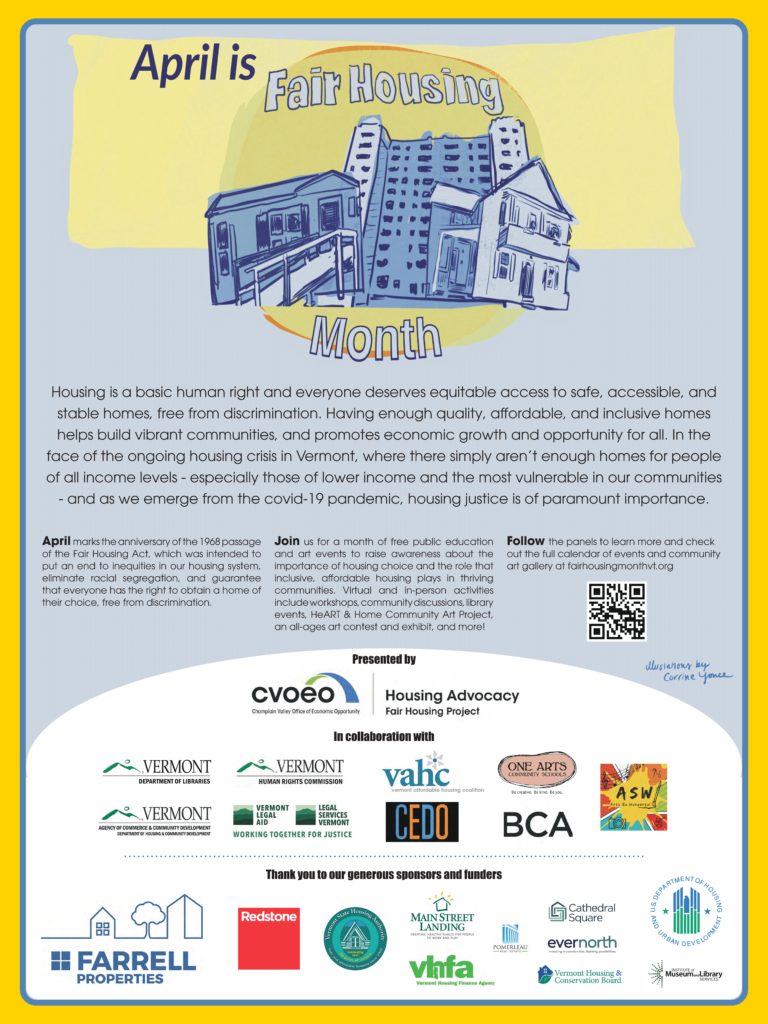
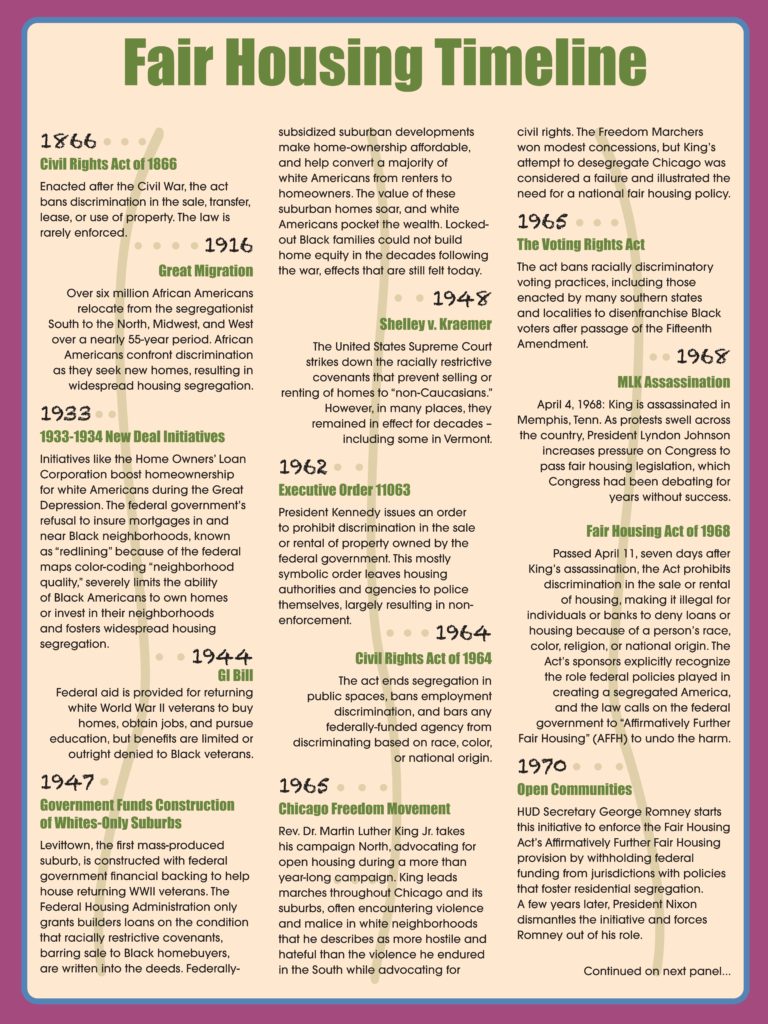
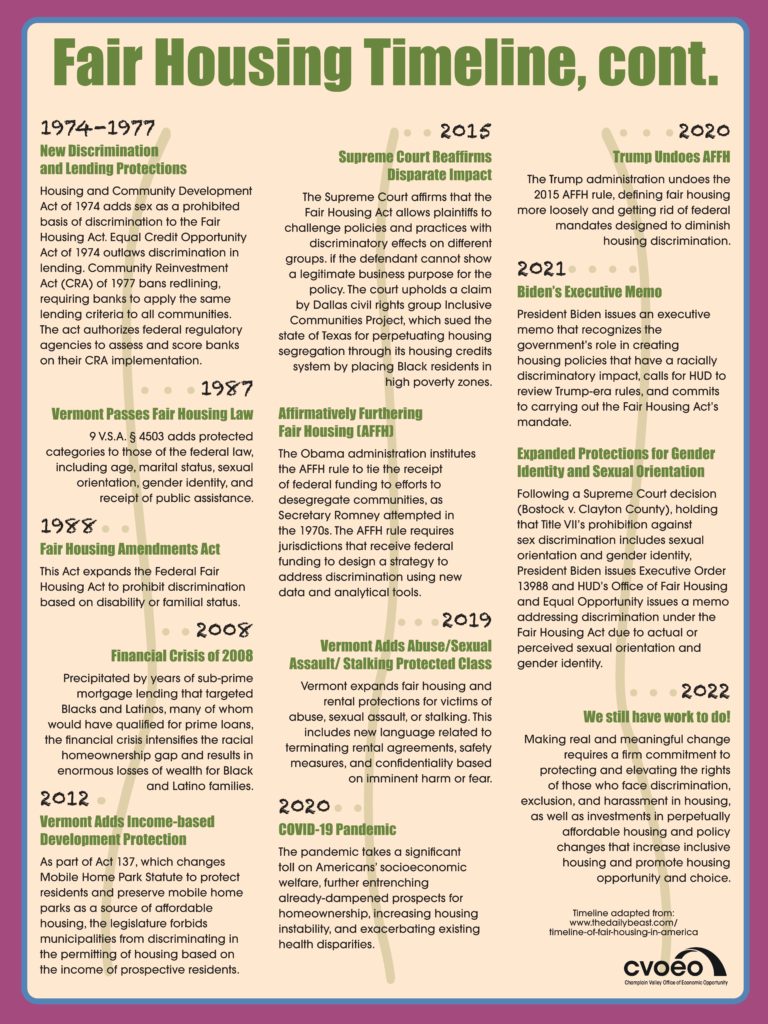
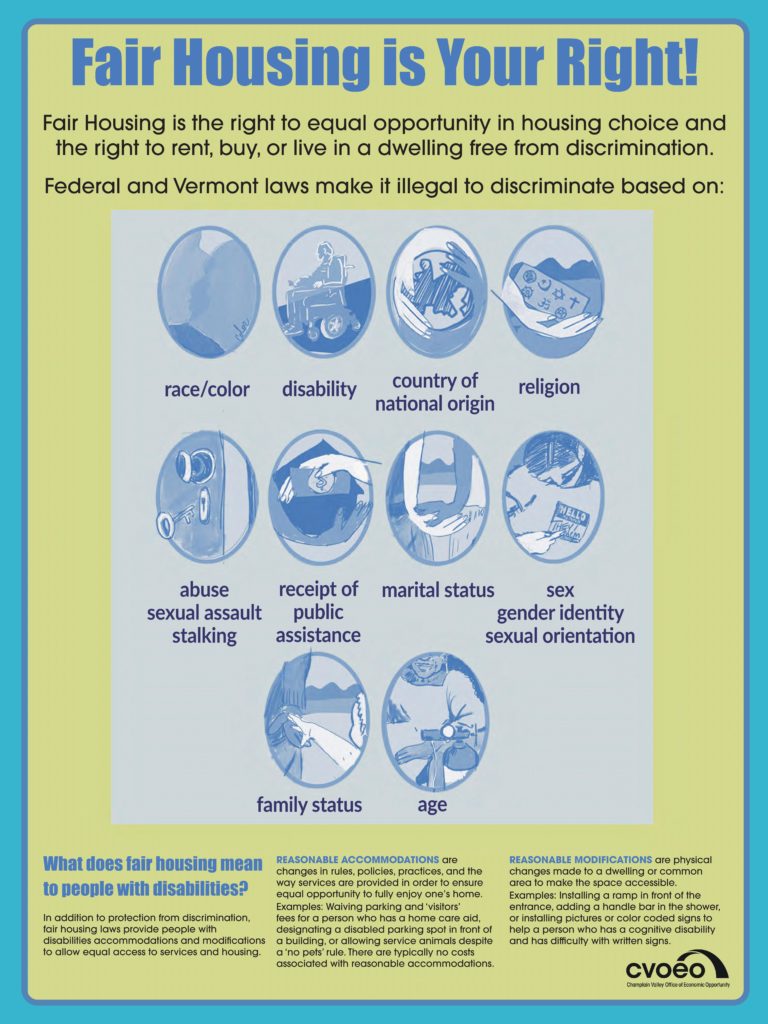
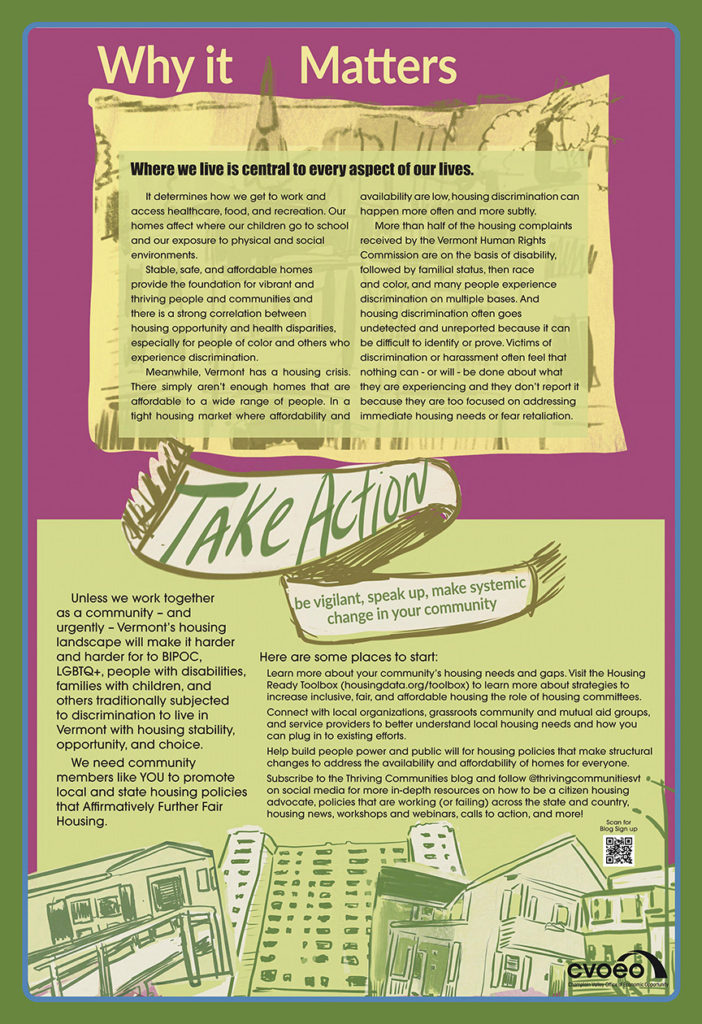
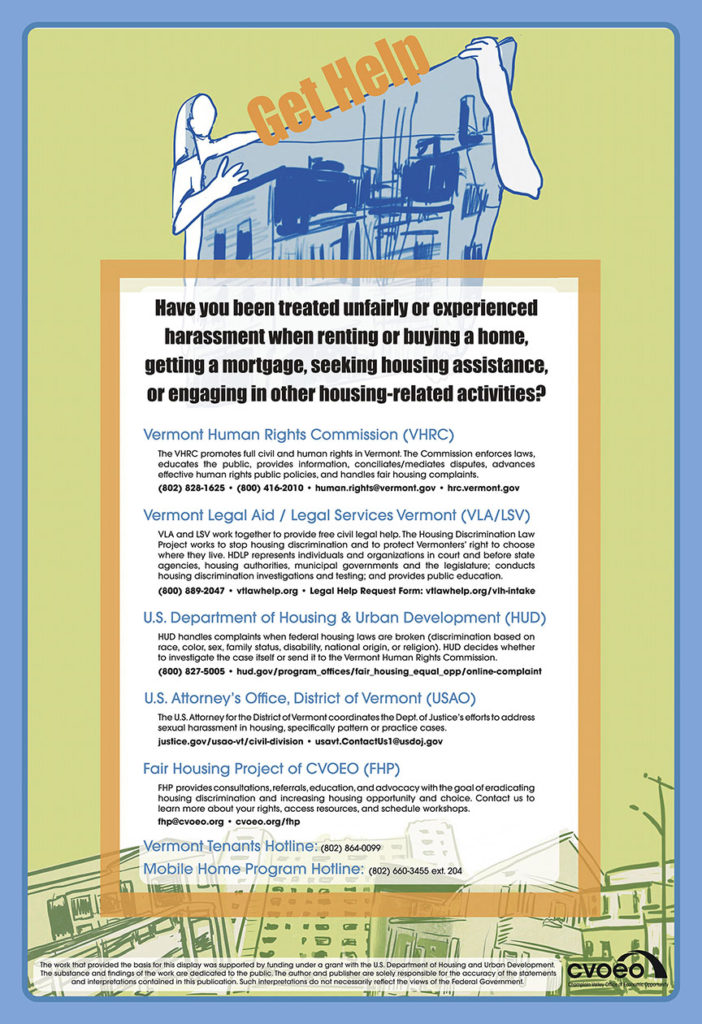
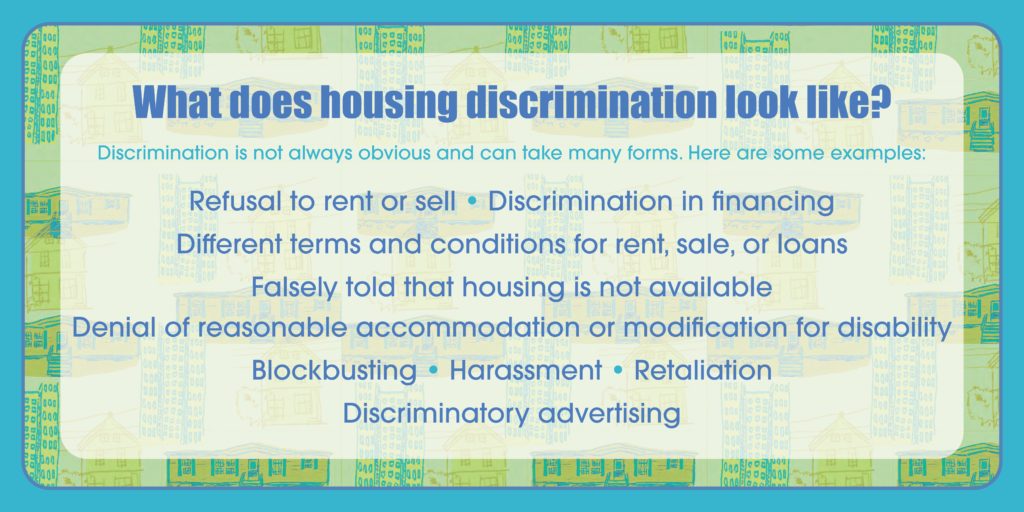
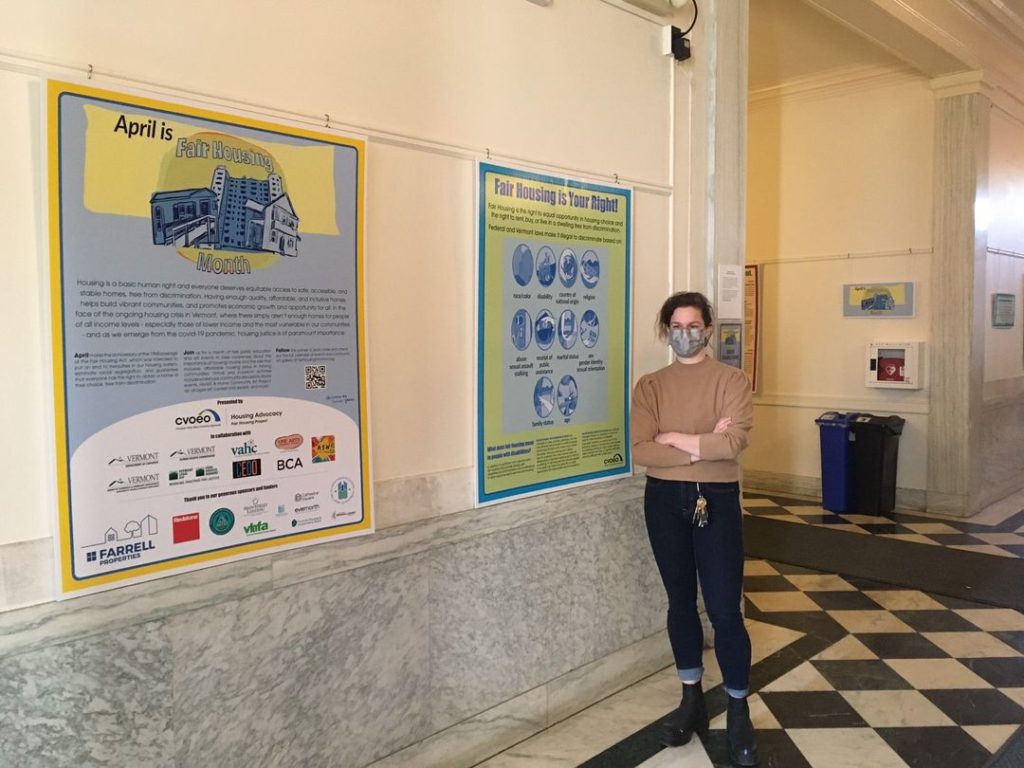
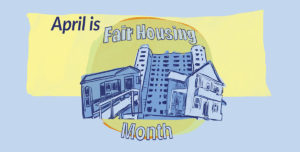 Each April we celebrate the 1968 passage of the Fair Housing Act with a series of free public education and art events to raise awareness about the importance of equal access to housing, free from discrimination, and the positive role that inclusive, affordable housing plays in thriving communities. Virtual and in-person activities include workshops, community discussions, library events, the all-ages HeART & Home Community Art Project, and an art contest and exhibit.
Each April we celebrate the 1968 passage of the Fair Housing Act with a series of free public education and art events to raise awareness about the importance of equal access to housing, free from discrimination, and the positive role that inclusive, affordable housing plays in thriving communities. Virtual and in-person activities include workshops, community discussions, library events, the all-ages HeART & Home Community Art Project, and an art contest and exhibit.